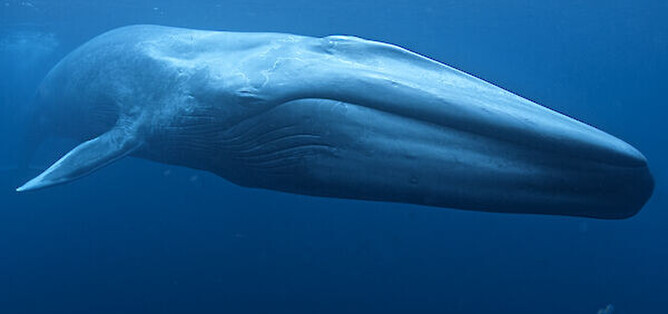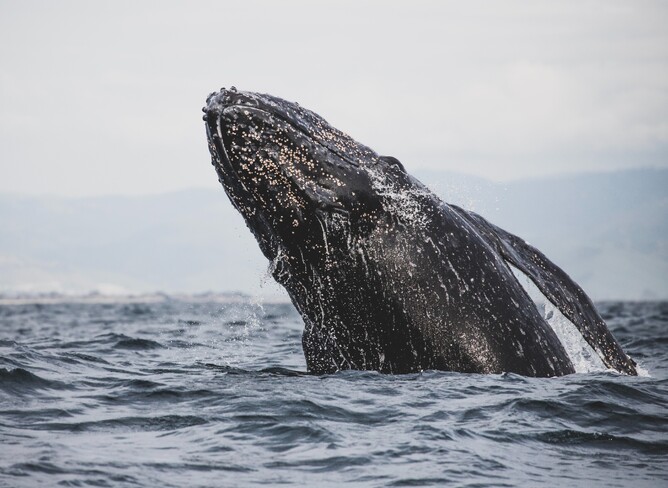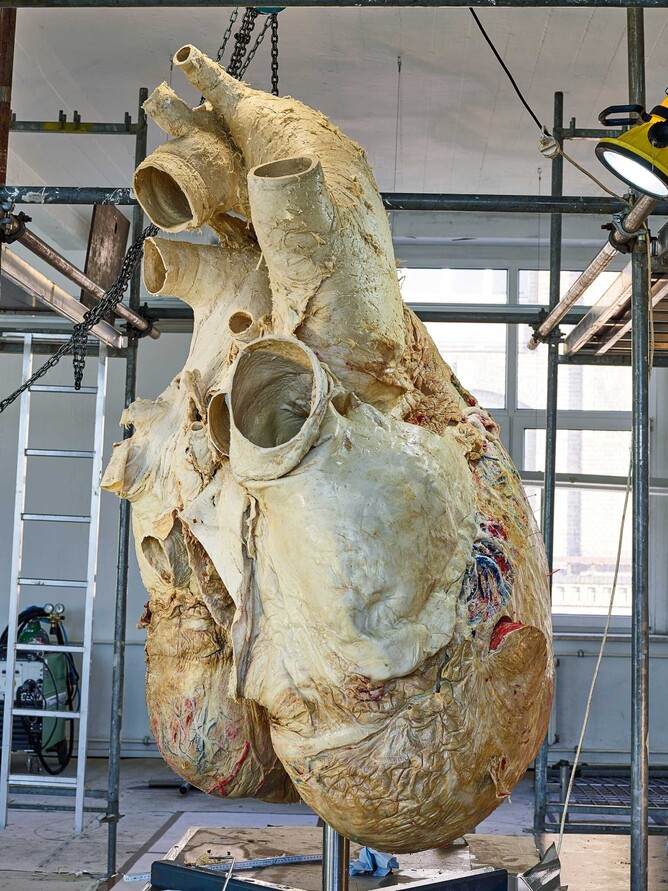With a big heart...
Even though they are huge animals (in fact blue whales are the largest animals on the planet), not many people have the opportunity to meet them up close, observe them and be amazed by their size and beauty. So like most people its easy to ignore their presence in the ocean, not think about them, until one day we found ourselves looking at a humpback whale breaching in front of the dive boat (whilst taking guests out on a dive excursion), thats when we knew we needed to be close to them, thats when we knew it was part of our path to meet them, dive with them, learn about them, love them and protect them.
We quickly found ourselves attracted to working at locations on their natural migratory routes where we could dive with them and share these amazing experiences with others. Our journey took us around the globe to some amazing locations like Sri Lanka, Fiji & Australias Great Barrier Reef - all great places to dive with whales including the largest of all, the Blue Whale.
The blue whale is the largest animal on the planet, weighing as much as 200 tons. The blue whale has a heart the size of a Volkswagen Beetle. Its stomach can hold one ton of krill and it needs to eat about four tons of krill each day. They are the loudest animals on Earth and are even louder than a jet engine. Their calls reach 188 decibels, while a jet reaches 140 decibels. Their low frequency whistle can be heard for hundreds of miles and is probably used to attract other blue whales.
But how did they get so big?
Several million years ago, blue whales evolved to binge-eat tiny crustaceans called krill, which are very abundant in some coastal regions during certain times of the year. All of that food can fuel a big body, and being big allowed these animals to take larger gulps of krill and swim efficiently from one krill buffet to the next.
But what’s interesting is that there are actually enough krill and other aquatic critters in the ocean for the whales to be even bigger. Food, alone, does not seem to limit the potential body size of whales, there has to be something else about their bodies that stops them from getting even bigger?
The answer, scientists suspect, may lie in the heart.
The human heart beats at around 60 to 100 times a minute, but the heart of the blue whale beats as few as two times per minute. Amazing huh? If you were to put an enormous stethoscope up to a blue whale’s chest underwater, it might sound something like this:
That clip was produced using real data that scientists collected a few years ago from a blue whale in Monterey Bay, California. The heart beated slowly when the animal dived, but when it came to the surface to breathe, the rate picked up dramatically, reaching as fast as 37 beats per minute.
Whales hold their breath whilst feeding on krill which tend to aggregate deep underwater. That causes carbon dioxide (CO2) to build up in their blood. When these marine mammals return to the surface to breathe, their hearts beat fast to rid their bodies of CO2 and replace it with fresh oxygen, so they can dive back down and continue feeding.
Larger hearts beat slower and take much longer to replenish oxygen in the body. That means whales have to spend more time on the surface, catching their breath, which eats into precious time they have to feed on a seasonal resource like krill. Too big a heart and these behemoths might not have enough time to eat.
Heart rate data of the blue whale scientists have collected shows that these animals essentially have two different heart rates. One of them is slow, like the clip you heard above; that’s when the whale is diving and trying to conserve oxygen. The other is fast, when the whale is back at the surface and its heart is racing to replenish oxygen. As researchers suspected, it’s there, on the surface, where big-bodied-ness could become a problem.
The EKG data shows that a single beat of the blue whale’s heart takes about 1.8 seconds, which means its heart can only beat roughly 33 times per minute. But as the whale was catching its breath, its heart was maxing out slightly above that number. This suggests something critical: The blue whale’s heart is working at “peak performance,” and it literally can’t beat any faster.
But what does that have to do with the limits of body size? If the whale were any bigger, it would need a bigger heart and more food. But, again, a bigger heart would beat slower and require the animal to spend more time at the surface, giving the whale less time to forage for krill. So basically, any bigger, and these animals likely wouldn’t be able to consume enough food to sustain their hulking figures.
The blue whale's heart
A blue whale population lives in Aotearoa (New Zealand) waters for part of the year. They don't just pass through on annual migrations, but it's unknown for how much of the year they are present. Acoustic and field research indicates this population has its own distinctive song, and a foraging ground was identified off the coast of Taranaki (South Taranaki Bight) in 2014.
There are two sub-species of blue whales in the Southern Hemisphere, the Antarctic (or true) blue whale and the slightly smaller (but still very large) pygmy blue whale. True blue whales migrate to the Antarctic oceans to feed during summer months, but their distribution outside this period is relatively unknown.
Pygmy blue whales do not migrate south to feed near Antarctica, but stay in more northern waters. It is currently unknown which sub-species (or perhaps both) occur in Aotearoa waters.
All blue whale populations were severely exploited by commercial whaling in the 20th century. This reduced the Antarctic population to less than 1% of its original size, from an estimated 200,000 animals to less than 2,000.
Like other large whales, blue whales are also threatened by environmental change including habitat loss and toxics. Blue whales can also be harmed by ship strikes and by becoming entangled in fishing gear. Although commercial whaling no longer represents a threat, climate change and its impact on krill (shrimp-like crustaceans), blue whales' major prey, makes this cetacean particularly vulnerable.
What can I do to help and where can I learn more about whales?
For 60 years, WWF has worked to help people and nature thrive.
As the world’s leading conservation organization, WWF works in nearly 100 countries. At every level, we collaborate with people around the world to develop and deliver innovative solutions that protect communities, wildlife, and the places in which they live.
With a community of over 11 million Activists worldwide they have continued to give us hope as we make strides in protecting the diversity of life on earth. Take action by clicking here.
Or why not donate much needed funding by "adopting a whale", Click here for more details.
If you would like to learn more about whales and other marine mammals, why not sign up for a Marine Mammal Ecology program where you will learn what makes marine mammals distinct from land mammals, discover where they live, explore their physiology, and how to identify various species. You will also learn about marine mammal conservation - a great way to help save the ocean.
For more information on the SSI Marine Mammal Ecology program Click here.
Until next time we hope you have as big heart for all whales as we do...



